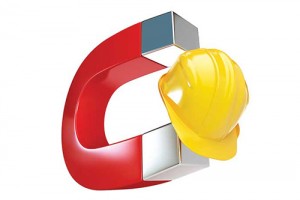Author
Law could provide tax relief for aggregate producers
Once again, lawmakers waited until late in the year to pass another “extenders” bill. The new “Protecting Americans from Tax Hikes (PATH) Act of 2015” retroactively extends the 50 or so temporary tax provisions that are routinely extended on a one- or two-year basis. And beginning with the Forms W-2, W-3, and returns for reporting non-employee compensation (e.g., Form 1099-MISC) that are to be filed for the 2016 tax year and later, PATH will require them to be filed on or before January 31 of a given year. No longer will they be eligible for the extended filing date for electronically filed returns. Also extended by PATH are a couple of provisions that may or may not benefit aggregate mining operations. The mine rescue team training credit has been extended through 2016 and allows operators to claim a tax credit for the lesser of $10,000 or 20 percent of the cost of the training program. The election to expense mine safety equipment is available for all property placed in service… Keep Reading
Understanding tax write-offs
As many in the aggregate industry have learned, our ever-changing tax rules make it difficult to get the full tax deduction producers are entitled to for the equipment and property that are so essential to every operation. The so-called “extenders” tax law that passed late in 2014 did extend the first-year write-off for so-called “Section 179 expenses” and “bonus” depreciation, but only for the 2014 tax year. Unless new legislation is passed, most crushed stone, sand and gravel producers must be content with the traditional methods for recouping the cost of business equipment and property. Although the current tax rules allow expenditures of up to $25,000 to be expensed or written off in the current tax year, the cost of most tools, equipment and even land improvements above that amount can only be recovered via depreciation deductions. Depreciation fine print Although land usually isn’t depreciable because it doesn’t have a definite life, the cost of “improvements” to that land, as well as other business property, can be depreciated, so long… Keep Reading
Battling city hall
Consider it the perfect Catch-22: Businesses are making less money and paying less in taxes at the same time costs are going up for governments at the state and local levels. Many states are raising taxes across the board – property, sales, income and excise – with more increases projected. While that’s happening, technology also enables both state and local governments to better audit and more efficiently compare notes. In other words, enforcement is becoming more aggressive and more issue-focused. Attempting to prevent local, state or even federal lawmakers from increasing the amount of rules, regulations, fees and taxes that every aggregates operation must contend with is often fruitless, and always expensive. Battling the city hall, county or statehouse over zoning issues, unfairly levied fines, property tax assessments and tax bills can be even more expensive. Tilting at windmills Fortunately, our tax laws contain a number of unique tax breaks and more routine deductions to help every business reduce the cost of those battles. While most quarries and sand-and-gravel pits… Keep Reading
Worker magnets
How can any aggregates mining operation hope to compete for the dwindling number of workers available in today’s marketplace? And how can any producer afford to keep the workers that are so essential to its success, while competing for new workers to help it grow? Survey after survey shows that it is not money alone that attracts new workers and keeps existing employees on the job. It is the benefits. And, so long as our tax laws are followed closely, the value of many fringe benefits can be excluded from an employee’s income and deducted by the employer. But, keep in mind, no employer should ignore cash. Cash is king People like being paid – and not just cash salaries but also those all-important “bonuses.” Bonuses are a great way to reward the kind of performance an employer is looking for. Recognizing the effort made by a worker or his or her contribution to the profitability of the operation is often included on any list of economical “benefits” offered by… Keep Reading
The art of recordkeeping
Knowing which documentation to save, and for how long, can make recordkeeping less of a hassle. The “tax season” may be long over but the need for good recordkeeping is not. Records are not only essential for tax deductions but, as many aggregate producers are all-too-well aware, a similar need for books and records is also important when selling the business, attracting partners or investors, getting a loan or being audited by any government agency. Although U.S. federal income tax laws require only that every sand, gravel or crushed stone business keep “complete and accurate records,” just what records an aggregates business needs to keep, what records it should retain and for how long, usually requires a good strategy. Taxing tax records It makes a great deal of sense to keep a copy of the aggregate business’s tax returns permanently to help prepare future or amended returns. The IRS suggests that tax-related records be retained until the “period of limitations” expires for that year’s return. According to the Internal Revenue… Keep Reading
Buy or lease?
New rules will have an impact on whether it’s better to buy or lease equipment for your operation. Even as credit becomes more readily available, whether to buy or lease is a question facing many crushed stone, sand and gravel producers and businesses. While there is no one correct answer that fits every situation, nor every aggregates business, compared to the simplicity of buying, leasing is far more complicated and may be getting more complex. The lease accounting rules as we currently know them may be changing as a result of ongoing negotiations between the International Accounting Standards Board, which sets rules for many countries around the globe, and the U.S. Financial Accounting Standards Board, which writes the rules in the United States. The proposals would require many businesses to add all but the shortest leases to their balance sheets as liabilities, much like debt. Why lease? Equipment leasing is similar to a loan in which the lender buys and owns equipment and then “rents” it to an aggregates producer… Keep Reading
State taxes
Aggregate producers should be prepared for unexpected audits or additional taxes. The Council on State Taxation (COST), a Washington, D.C., think-tank, recently released the results of a study showing business taxes accounted for 45 percent of all state and local taxes collected. While corporations may not pay a lot of income taxes, they are paying hundreds of millions of dollars in property, severance, sales, employment and other state and local levies. The study found that businesses paid $671 billion in state and local taxes in 2013, up about 4 percent over the previous year – and many state tax levies are on the increase. Cash-strapped states and local governments are getting aggressive – hiring more collectors, hounding scofflaws and exploiting provisions of their tax laws that haven’t been enforced in years. And don’t forget the increases in the corporate taxes, individual taxes, sales and use taxes, property taxes and unemployment insurance tax that burden businesses of every size. Will you and your crushed stone, sand or gravel business be the… Keep Reading
Tax increase prevention
Find out which tax extenders aggregate producers will be afforded in preparation for filing 2014 taxes. Congress has passed and the president has signed into law the Tax Increase Prevention Act of 2014, the so-called “tax extenders” that retroactively extended 54 expired tax breaks for one year that effectively allow business owners such as aggregate producers to claim a number of popular but temporary tax incentives on their 2014 tax returns. Many people would have been denied tax breaks without these one-year extensions, including businesses big and small, commuters who use public transportation, teachers who spend their own money on classroom supplies, individuals who claim the state and local sales tax deduction, people who pay for higher education tuition and people who live in states without state income taxes. Without the new law, pit and quarry operators would have been unable to claim business and energy incentives such as bonus depreciation, Section 179 first-year expensing and the research tax credit. The election to expense mine safety equipment and the underused… Keep Reading
How to use tax breaks to reduce employee education costs
Education is an excellent fringe benefit producers can employ to attract and retain employees – and tax breaks can help to reduce the cost. One of the major assets for all aggregate producers is their employees. As is the case with most business assets, producers usually have quite a bit of money invested in hiring and training workers. Smart producers realize that improving a business asset can reap rewards that far exceed the cost of any improvements made to that asset. When it comes to making smarter workers, everyone benefits thanks in large part to our tax laws. The pit or quarry operation prospers with smarter, better-trained employees – and a tax deduction if they foot the bill for employee education or training costs. Smarter employees can often avoid a tax bill for the value of education provided by an employer and reap a tax deduction for their own educational expenses. Plus, they are often rewarded with higher pay, promotions or more opportunities. Regardless of whether an employer or the operation’s suppliers… Keep Reading













